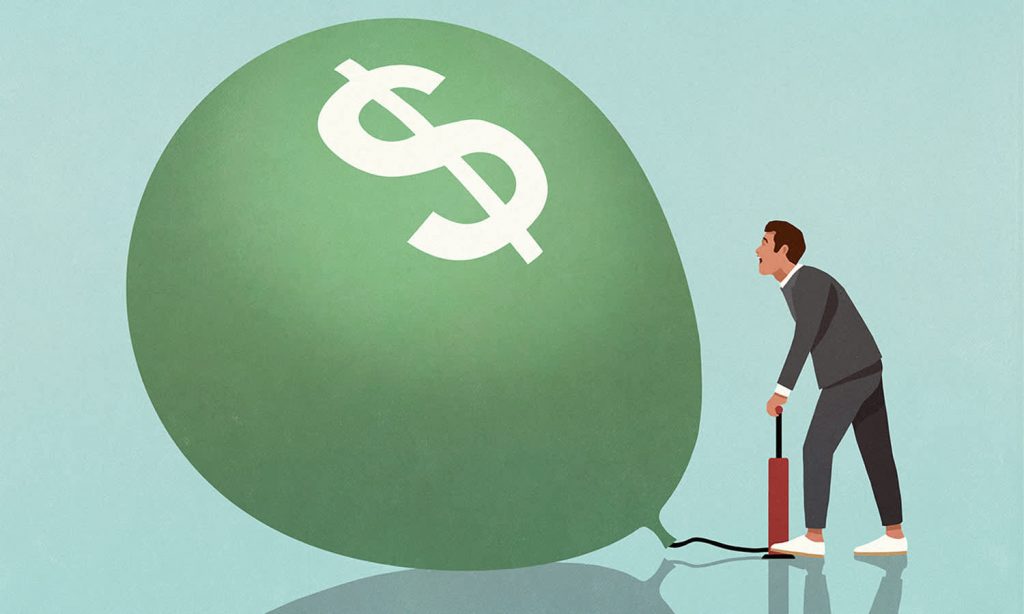Inflation has increased by 2.1% since the start of the year. That’s the biggest jump Australia has seen since the start of this century.
New figures from the Australian Bureau of Statistics have been released, showing that the Consumer Price Index — a measure of inflation — has increased by 5.1% over the past 12 months.
This news has sent politicians and major financial institutions scrambling. It’s particularly problematic for Prime Minister Scott Morrison as the last time that the Reserve Bank stepped in to combat inflation before an election was in 2007 when sitting PM John Howard lost to Kevin Rudd. If you’re looking for omens, this is a bad one.
Of course, a lot of us are probably scratching our heads wondering exactly what all the fuss is about. If this is you, you’re in the right place. Here, we dig into what is behind the current rise of inflation, what it actually means, and the impact will be on you and your finances. Here’s what you need to know.
What Is Inflation?
Inflation is a financial process whereby things become more expensive relative to the value of the currency. It’s basically just ‘things cost more’ and the reason why $20 used to go a lot further than it does today.
The Consumer Price Index, or CPI, is one way that the government keeps track of the rate of inflation. It’s an average of the increase and decrease of everything from building materials to clothing. The CPI isn’t set by the government or banks, but is instead a way that they measure what is already happening in the economy.
The current jump in inflation that has spooked economists and the political class is thought to be largely due to the massive rises in petrol prices we’ve seen since February, after the Russian invasion of Ukraine. Petrol prices rose by 35.1% over 12 months, which is the highest jump we’ve seen since Iraq invaded Kuwait in 1990. Higher fuel prices have a huge knock-on effect to the rest of the economy, increasing the price of most things. This more expensive stuff is what we call inflation.
Rising house prices, which are up 13.7%, and rising food prices due to flooding, have also contributed to the rate of inflation.
Is Inflation Good or Bad?
Generally, inflation is seen as a bad thing. However, economists think that a slow and steady rate of inflation is necessary for a healthy economy.
Of course, it’s all about striking the right balance. Too much, and you get hyperinflation, where money breaks down as a means of payment. Not enough, and it becomes too expensive to produce things, leading to job losses.
From a consumer perspective, inflation means that money is worth less because it can buy less stuff. This is usually fine if wages keep increasing at the rate of inflation, however, in Australia, this has not been the case for some time. A 5.1% increase in inflation over 12 months, without an equivalent pay rise, means you’re actually earning 5.1% less than you were a year ago.
Rising inflation means that people are generally going to struggle more to pay for things, mortgage payments will likely increase, and cutting costs will become important. During high inflation periods, people generally blame the government for bad management of the economy and typically seek to change them (told you it would be bad for Morrison).
Because it’s a bad spot to be in economically, bringing inflation down will be a priority for government bodies. This is the responsibility of the Reserve Bank of Australia, which generally tries to keep inflation to between 2% and 3%. They’ll do so by raising interest rates, which they’re expected to announce they will do next week, however, we might not see the actual interest rate rise until after the election.
How Does Raising the Interest Rate Help Inflation?
So, the Reserve Bank of Australia, or RBA, is in charge of the supply of money. Their job is to keep the economy running smoothly by stabilising the currency. The RBA lends money to banks at a special rate, called the ‘official cash rate,’ which is much lower than what a business or an individual can borrow from a bank. This is how banks make money, by lending that money out at a higher rate than what they got it for.
Over the past few years, during the pandemic, the official cash rate has been historically low, at 0.1%, to keep money flowing into the economy. It’s a figure that has been steadily declining since 2010, meaning many of us won’t have experienced a cash rate increase, at least for a long time.
By raising the official cash rate, the RBA is effectively slowing the amount of money flowing into banks and therefore the economy more generally. The idea here is that this will slow economic production, raising repayment rates on debt, meaning people will have less money to spend. Less spending equals less demand which means prices drop, thereby lowering inflation.
With us so far?
All of this is likely to cause a turbulence that will hit low income earners the hardest. At the same time, though, it will actually put workers in a good position.
When inflation and interest rates go up, people want more money, so they demand wage increases. Because the unemployment rate is so low, and businesses across the economy are struggling to find workers, they are in a much stronger position to get them.
This, however, means that those businesses may then have to put their prices up to cover their new costs, pushing inflation up again. The RBA will be keeping a close eye on this, and attempt to lower interest rates as soon as inflation starts to decline to avoid this vicious cycle.
For now, the RBA normally put interest rates up in increments of 0.25 but because the rate is 0.1 right now, we could see interest go to 0.25 initially, and then up in steps over the next nine months or so. This means it’ll be a fairly tricky time for everyone over the months to come.
Read more stories from The Latch and subscribe to our email newsletter.







